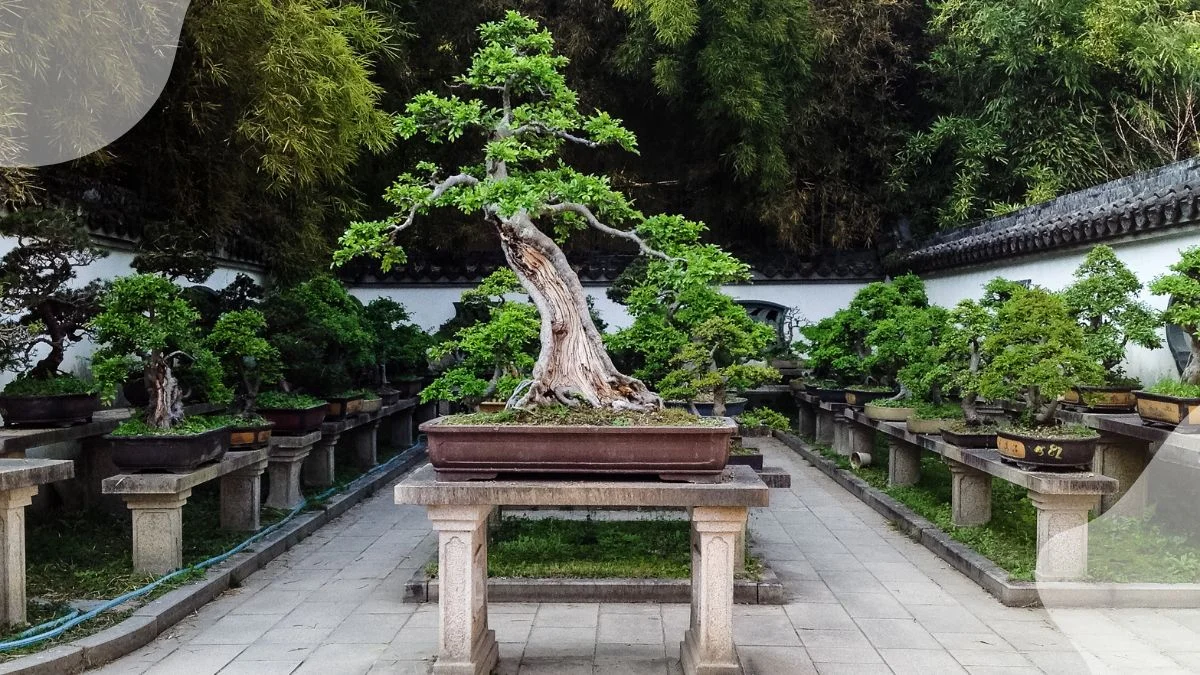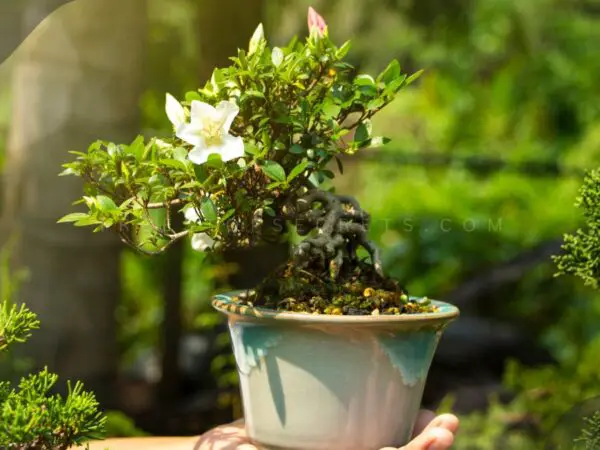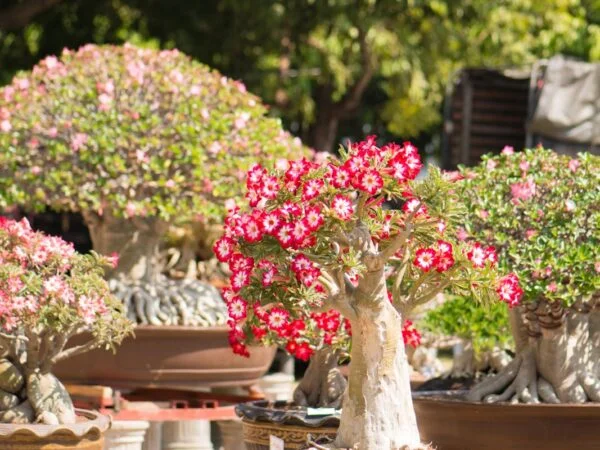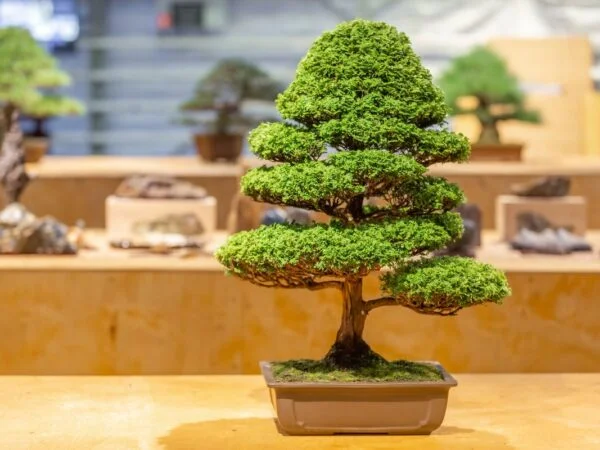Did you know that there are over 1000 species of common bonsai trees worldwide? These miniature marvels, such as beautiful bonsai trees and petite bonsai tree, bring tranquility and beauty to any space, making them a popular choice for plant enthusiasts. From the elegant Ficus Retusa to the resilient Juniperus Procumbens, each bonsai tree species has its unique charm, care requirements, and category. Whether you're a seasoned bonsai grower or just starting your journey, understanding the diverse options available can help you choose the perfect tree for your home or garden.
Key Takeaways
- Choose Wisely: When selecting a bonsai tree, consider factors like your experience level, available space, and the amount of care you can provide.
- Tailored Care: Different bonsai trees require specific care routines. Research and understand the unique needs of your chosen species to ensure its health and growth.
- Popular Picks: Explore common bonsai tree species in the Ficus, Juniper, and Chinese Elm category, known for their adaptability and suitability for beginners.
- Adapt to Seasons: Adjust your bonsai care practices based on seasonal changes to promote growth and prevent issues like overwatering or frost damage.
- Problem-Solving Approach: Be vigilant in troubleshooting common bonsai problems such as pests, diseases, or improper watering to maintain the health of your tree.
- Artistic Touch: Embrace the art of styling and shaping your bonsai tree to create unique designs that reflect your personality and vision.
Bonsai Basics
Understanding Bonsai
Bonsai is the art of growing miniature trees in containers, originating from China and Japan. It symbolizes harmony, balance, and peace. The design principles focus on creating a natural, aged appearance in a small scale. Bonsai's history dates back over a thousand years, evolving from Chinese penjing to Japanese bonsai.
Care Essentials
Proper watering is crucial for bonsai health; it requires consistent moisture without overwatering. Well-draining soil helps prevent root rot, while fertilization provides essential nutrients for growth. Pruning and shaping are vital techniques to maintain the desired size and shape of the bonsai tree.
Common Species
- Broadleaf evergreen bonsai trees like the Ficus have lush foliage all year round.
- Deciduous bonsai trees such as the Maple showcase vibrant seasonal leaf changes.
- Conifer bonsai trees like the Pine feature needle-like leaves and unique branching patterns.
Selecting Your Bonsai
Size and Shape
Determining the ideal size for your bonsai tree involves considering the available space and your aesthetic preferences. Smaller bonsai trees are easier to maintain and are suitable for beginners. Larger bonsai trees require more space and care.
Bonsai trees come in various shapes such as formal upright, informal upright, slanting, cascade, and semi-cascade. Each shape has its unique aesthetic appeal. The formal upright style represents strength and stability, while the cascade style mimics a tree growing over a cliff edge.
Proportion plays a crucial role in bonsai design. It is essential to ensure that the trunk thickness, branch length, and pot size are harmoniously balanced. A well-proportioned bonsai tree creates a sense of natural beauty and elegance.
Indoor vs Outdoor
Indoor bonsai trees have specific care requirements due to the controlled environment. They thrive in areas with sufficient light and humidity levels. Indoor bonsais offer the benefit of being able to enjoy them all year round, regardless of the weather outside.
Outdoor bonsai cultivation requires careful consideration of seasonal changes, sunlight exposure, and temperature variations. While outdoor bonsais face challenges like pests and extreme weather conditions, they benefit from natural light and air circulation, promoting healthy growth.
- Benefits of Indoor Bonsai Trees:
- Suitable for individuals living in apartments or regions with harsh climates.
- Easier to control environmental factors like light and humidity indoors.
- Advantages of Outdoor Bonsai Cultivation:
- Exposure to natural elements promotes stronger tree development.
- Outdoor bonsais can experience seasonal changes, enhancing their overall aesthetics.
Care Guide
Watering Techniques
Proper watering frequency is crucial for the health of bonsai trees. Overwatering can lead to root rot, while underwatering causes dehydration. To ensure optimal growth, water bonsai trees when the topsoil feels slightly dry.
Signs of overwatering include yellowing leaves and a musty smell in the soil. On the other hand, symptoms of underwatering include wilted leaves and dry soil. Adjust watering based on these indicators.
To water bonsai trees effectively, use a gentle stream of water to moisten the entire root ball. Allow excess water to drain out completely to prevent waterlogging. Consider using a moisture meter to gauge soil moisture accurately.
Soil and Fertilization
The ideal soil composition for bonsai trees should be well-draining yet moisture-retentive. A mix of akadama, pumice, and lava rock is commonly recommended for healthy root development. Ensure proper aeration to prevent root suffocation.
Fertilization plays a vital role in maintaining bonsai tree health by providing essential nutrients. Use a balanced liquid fertilizer during the growing season to support vigorous growth. Avoid fertilizing newly repotted trees to prevent stress.
Different types of fertilizers suitable for bonsai trees include organic options like fish emulsion and inorganic choices such as chemical granular fertilizers. Select a fertilizer with balanced N-P-K ratios suitable for your specific tree species.
Pruning Tips
Guidelines on pruning bonsai trees involve trimming branches to maintain shape and encourage new growth. Prune deciduous trees in early spring before buds swell and evergreens in late winter or early spring.
Pruning serves the dual purpose of promoting bonsai tree health by removing dead or diseased branches and enhancing aesthetic appeal by shaping the tree. Regular pruning also helps maintain the desired size and proportions of the bonsai.
Tools required for effective bonsai tree pruning include sharp scissors or shears for delicate cuts, concave cutters for larger branches, and knob cutters for removing stubs cleanly. Ensure tools are clean and sharp to prevent damage to the tree.
Common Bonsai Trees
Juniper
Juniper bonsai trees, known for their rugged appearance, are a favorite among bonsai enthusiasts. Their gnarled trunks and delicate foliage create a captivating aesthetic. When caring for Juniper bonsai trees, ensure they receive ample sunlight and well-draining soil to thrive. Regular pruning and wiring are essential to maintain their distinctive shape.
- Pros of Juniper Bonsai Trees:
- Resilient and adaptable to various environments.
- Ideal for beginners due to their forgiving nature.
Chinese Elm bonsai trees are prized for their small, glossy leaves and intricate branch structure. They are versatile and can be styled in various ways, making them a popular choice for bonsai artists. To keep Chinese Elm bonsai trees healthy, maintain consistent moisture levels and provide adequate sunlight. Pruning should be done regularly to encourage growth and shape the tree effectively.
Chinese Elm
- Cons of Chinese Elm Bonsai Trees:
- Susceptible to pests like aphids if not properly cared for.
- Require frequent pruning to maintain their desired shape.
Ficus bonsai trees come in a wide range of varieties, each with its unique characteristics. Popular choices include the Ficus Retusa and Ficus Microcarpa. To ensure the health of Ficus bonsai trees, it is crucial to provide them with sufficient light and humidity. Watch out for pests like spider mites and adjust watering accordingly to prevent root rot.
- Key Information about Ficus Bonsai Trees:
- Thrive in warm, humid conditions.
- Prone to dropping leaves when stressed.
Maple bonsai trees offer a stunning display of vibrant colors throughout the seasons. With varieties like Japanese Maple and Trident Maple, they add a touch of elegance to any collection. Proper care for Maple bonsai trees involves adjusting watering schedules based on seasonal changes. Pruning should be done with precision to enhance their natural beauty.
Maple
- Guidance on Shaping Maple Bonsai Trees:
- Utilize wiring techniques during the tree's dormancy period.
- Regularly inspect for signs of disease or pest infestations.
Special Care Species
Azalea Bonsai
Azalea bonsai trees are known for their vibrant flowers and small leaves, making them a popular choice among bonsai enthusiasts. These trees require well-draining soil to prevent root rot, and they thrive in slightly acidic conditions. To promote flowering, ensure your Azalea bonsai receives enough indirect sunlight and maintain consistent moisture levels.
Pine Trees
Pine bonsai trees exhibit distinctive features such as needle-like leaves and rugged bark, adding an element of wilderness to any collection. Different types of Pine bonsai trees have varying care requirements, with some needing more sunlight than others. Proper needle maintenance involves removing dead needles periodically to encourage new growth and maintain the tree's health.
Cedar Care
Cedar bonsai trees are characterized by their fragrant foliage and elegant appearance, making them a sought-after choice for bonsai growers. These trees prefer cool temperatures and moderate humidity, thriving in well-draining soil that allows excess water to escape easily. During winter, protect your Cedar bonsai by placing it in a sheltered location to shield it from harsh winds and frost.
Seasonal Care
Spring Tips
Spring is a crucial time for caring for bonsai trees. Repotting is essential during this season to refresh the soil and provide nutrients. fertilization should be increased to support the tree's growth.
To promote healthy growth in spring, ensure your bonsai receives adequate sunlight and water. Pruning is also vital to shape the tree and encourage new growth. Consider repositioning your bonsai to optimize sun exposure as the days get longer.
Summer Care
During the hot summer months, proper watering is crucial to prevent the bonsai from drying out. Implement a shading strategy to protect the tree from excessive heat and sun exposure. Regularly check the soil moisture levels to avoid over or under-watering.
Pest management becomes more critical in summer. Keep an eye out for common pests like aphids and spider mites. Consider using organic pest control methods to protect your bonsai without harming the environment.
Winter Protection
Winter protection is vital to ensure the survival of bonsai trees during cold weather. Shield your bonsai from frost by wrapping it with insulating material. Avoid exposing the tree to extreme temperatures and consider moving it indoors if necessary.
Overwintering bonsai trees indoors can help them survive harsh winter conditions. Place your bonsai in a cool room with sufficient light but away from direct heat sources. Monitor the soil moisture levels carefully as indoor environments can affect watering needs.
Troubleshooting
Pest Management
Pests can wreak havoc on bonsai trees, affecting their health and growth. Common pests include aphids, spider mites, and scale insects. To combat these nuisances, regularly inspect your bonsai for any signs of infestation. Organic pest control methods involve using natural predators like ladybugs or neem oil to keep pests at bay. On the other hand, chemical treatments such as insecticidal soaps can effectively eliminate pests, but be cautious with their usage to prevent harm to the tree.
Preventing pest infestations is crucial for maintaining the health of your bonsai tree. One preventive measure is to ensure proper watering and adequate sunlight, as healthy trees are more resilient to pest attacks. Keeping a clean growing environment by removing fallen leaves and debris can deter pests from settling in. If you notice any signs of pest activity, take immediate action to prevent further damage to your bonsai.
Disease Prevention
Bonsai trees are susceptible to various diseases, including root rot, powdery mildew, and fungal infections. Regularly inspecting your bonsai for any signs of disease is essential for early detection and treatment. To prevent diseases, avoid overwatering your bonsai as excessive moisture can lead to root rot and other fungal infections. Proper ventilation around the tree can also help reduce the risk of powdery mildew.
Recognizing the symptoms of common bonsai diseases is crucial for timely intervention. Yellowing or browning of leaves, unusual spots or growths on the branches, and wilting are all signs of potential disease issues. Treatments for bonsai tree diseases vary depending on the specific ailment but may include fungicidal treatments or pruning affected areas. Seeking advice from experienced bonsai enthusiasts or professionals can also provide valuable insights into disease prevention and management strategies.
Styling and Shaping
Wiring Techniques
Bonsai trees are shaped through wiring to guide their growth in a desired direction. This technique involves wrapping wire around branches to bend and reposition them. Different wiring techniques are used based on the style of bonsai tree being created. For example, formal upright trees require wires to be positioned vertically, while cascade styles need wires to be applied at an angle.
To wire a bonsai effectively, it's crucial to choose the right time during the tree's growth cycle. Spring is generally the best time for wiring as the branches are most flexible then. When wiring, ensure the wire is wrapped loosely but securely around the branch without causing damage. It's essential to check the wires regularly to prevent them from cutting into the bark as the tree grows.
Pruning for Style
Pruning plays a significant role in shaping the overall style of bonsai trees. By selectively removing branches and foliage, the tree's shape and size can be controlled. Directional pruning is a technique where cuts are made strategically to encourage growth in specific directions, enhancing the tree's aesthetics over time.
For example, pinching involves removing new shoots with fingers to maintain the tree's shape, while thinning focuses on reducing density by removing excess branches. In contrast, topiary pruning sculpts bonsai trees into geometric shapes like cones or spheres. Each pruning technique contributes to creating unique bonsai styles, from intricate shohin trees to majestic literati designs.
Final Remarks
You've now explored the essentials of bonsai care, from selecting the right tree to mastering seasonal maintenance. Understanding the unique needs of common and special care species will help you cultivate healthy, thriving bonsai. Remember, troubleshooting challenges and honing your styling techniques are all part of the rewarding journey of bonsai cultivation. Your dedication will be reflected in the beauty and tranquility these miniature trees bring to your space.
Take your newfound knowledge and put it into practice. Start or enhance your bonsai collection with confidence, knowing you have the tools to nurture these living works of art. Embrace the artistry and patience required, and watch as your bonsai flourish under your attentive care.
Frequently Asked Questions
What are some common bonsai trees suitable for beginners?
Japanese Maple, Ficus, Juniper, Chinese Elm, and Jade are popular choices for beginners due to their resilience and adaptability.
How often should I water my bonsai tree?
Water your bonsai tree when the topsoil feels slightly dry to the touch. The frequency depends on factors like tree species, pot size, and environmental conditions.
How do I select the right bonsai tree for my living space?
Consider factors such as available light, indoor or outdoor placement, climate conditions, and the time you can dedicate to care when selecting a bonsai tree.
What is the best way to shape my bonsai tree?
Use pruning shears and wire to shape your bonsai tree gradually over time. Regular trimming promotes healthy growth and helps achieve the desired aesthetic.
How can I troubleshoot common issues with my bonsai tree?
Check for signs of overwatering, underwatering, pests, or diseases. Adjust watering frequency, inspect leaves for abnormalities, and treat any issues promptly to maintain your bonsai's health.
Image Source: Paid image from CANVA





